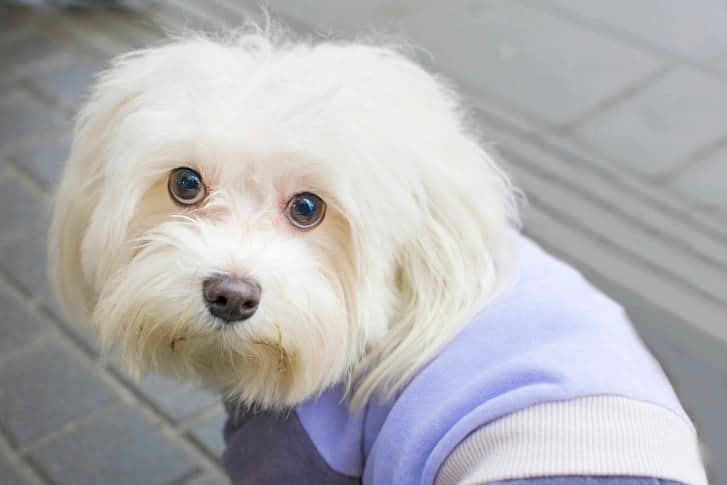“This post contains affiliate links, and I will be compensated if you make a purchase after clicking on my links.”

“We’ve had Oreo Since June 2015. He is scared of most things. He will not go for walks and doesn’t like to meet new people, but he is great with us. He is a 1.5 yr. old Bichon. What can I do about this? Thank you Steve!” – Jennifer M.
Shy and fearful dogs are quite common. Fear and overall shyness typically stems from a lack of proper socialization. That’s why it’s essential to take advantage of the Puppy Training Checklist. As the old adage goes, “An ounce of prevention is worth a pound of cure”. In conjunction with proper socialization and an obedience-first training approach, what else should you keep in mind when owning a shy or fearful dog? Here are 5 tips for owning a fearful or shy dog…
1. Treat Them as an Individual
Just as every human is unique, each dog is an individual. Don’t compare your dog to other dogs or one you used to own. Dismissing your dog’s uniqueness does a disservice to you and them. Embrace where your dog currently is, then take proactive steps to move them in the right direction. Comparison does no good, but analysis and action creates change.
2. Don’t Coddle
If your dog is afraid, don’t use the approach of, “Oh you poor baby!” Instead, come with the attitude of, “I got this. You don’t have to worry.” Being overly emotional, lavishing with pet or praise can make things worse as that’s reinforcing your dog’s current state of mind (which is fear or shyness). We need to be a dog’s calm, confident, and relaxed leader. No soldier would follow a basket case Sergeant who is an emotional wreck into battle, so why would your dog trust you if your confidence and capabilities were not evident.
3. Obedience First
Like most trainers, I prefer to take an obedience-first training approach when helping dogs. Instead of just attacking the symptom of fear, I want to lay a solid foundation of trust, respect, clear communication, and reliable obedience. This makes the dog feel comfortable and enables me to most efficiently help the dog.
4. Advocate for your Dog
You must keep your dog safe and under threshold. If you know something bothers your dog, you do not necessarily need to avoid that at all costs, but you must keep your dog from unnecessarily being subjected.
For Example: If I know a dog is fearful of cars, I won’t take them on a walk three feet from a busy road. That is not fair. Rather, I will keep them under threshold by walking as far away from the road as I have to, so the dog does not react. As he gets more confident seeing and hearing the cars at a distance, I will gradually move us closer.
Another example is for dogs who are fearful of strangers. When taking your dog for a walk it is inevitable that you will meet the person who says, “Its ok, all dogs love me”. If I come across that person, I will advocate for my dog, by insisting that they not approach my dog. If necessary I will remove my dog and walk the other way. Advocating for your dog keeps people safe, aids in training, and develops your dog’s trust in the fact that “You got this” when life gets scary for them.
5. Accept Tolerance
Lets be honest, we don’t love everything and everybody in life. In fact, we don’t love most things or people in life, we just tolerate them. You love certain places, people, family, etc. But you do not love every coworker, place you have to go, insect, or reptile. Don’t expect your dog to love every person, dog they meet, or busy place you take them to.
When working a fearful dog, tolerance is enough. Just getting your dog to coexist in and around stressful stimuli is enough. You may not love your coworker, but you tolerate them. You may not prefer traveling on high bridges, but you tolerate it. You don’t run up and hug ever stranger walking down the street, but you coexist. Helping your dog to just comfortably navigate life should be the primary goal.
Fearful and shy dogs need a little help in boosting their confidence and learning how to properly handle the stresses and uncertainty of life. Be your dog’s leader, who is there to set and guide them through realistic and appropriate goals. Both you and your dog will be happier for it.
S.R. Dog Training is the premier choice for in-home dog training in Westchester NY and Putnam NY. For more info on Professional Dog Trainer Steve Reid, visit www.srdogtraining.com and “Like” Steve on Facebook at www.Facebook.com/SRDogTraining.























